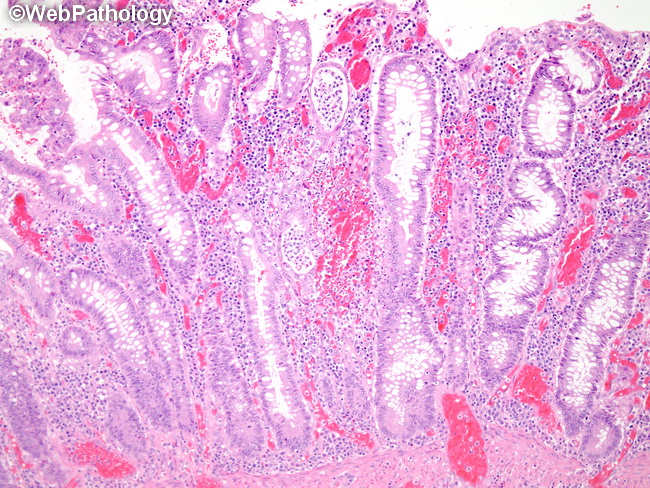Ulcerative Colitis : Differential Diagnosis


Comments:
The differential diagnosis of ulcerative colitis (UC) includes: 1) Infectious colitis: It can present with diffuse involvement of the colon and can cause toxic colitis; however, it will not show chronic mucosal changes such as crypt distortion seen in this image. A prominent neutrophilic infiltrate centered in lamina propria rather than within crypt epithelium and overall architectural preservation support infectious colitis over UC. 2) Collagenous colitis: It can show crypt distortion and basal lymphoplasmacytosis; however, collagenous colitis affects older individuals, does not present as fulminant colitis, and will show increased subepithelial collagen - a feature not seen in UC. 3) Crohn Disease: Crohn disease and UC have several overlapping features. UC shows diffuse involvement of colon, normal ileum, absence of transmural inflammation, and lack of epithelioid granulomas. 4) Ischemic colitis: Ischemic colitis can show ulcerations; however, it is segmental following specific vascular supply networks and does not present as pancolitis. There is no crypt distortion, but instead hyalinized lamina propria with atrophic crypts (microcrypts). Features favoring ischemic colitis include advanced age of the patient, location (more often in left colon), ischemic involvement of muscularis propria, and lack of crypt abscesses. 5) Medication-induced colitis: Non-steroidal anti-inflammatory drugs (NSAIDs) can cause focal acute colitis or diffuse involvement with ulceration. NSAID ulcers are sharply defined with no inflammation in adjacent mucosa.



